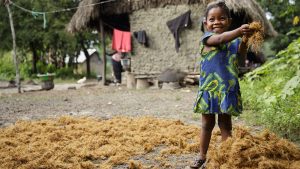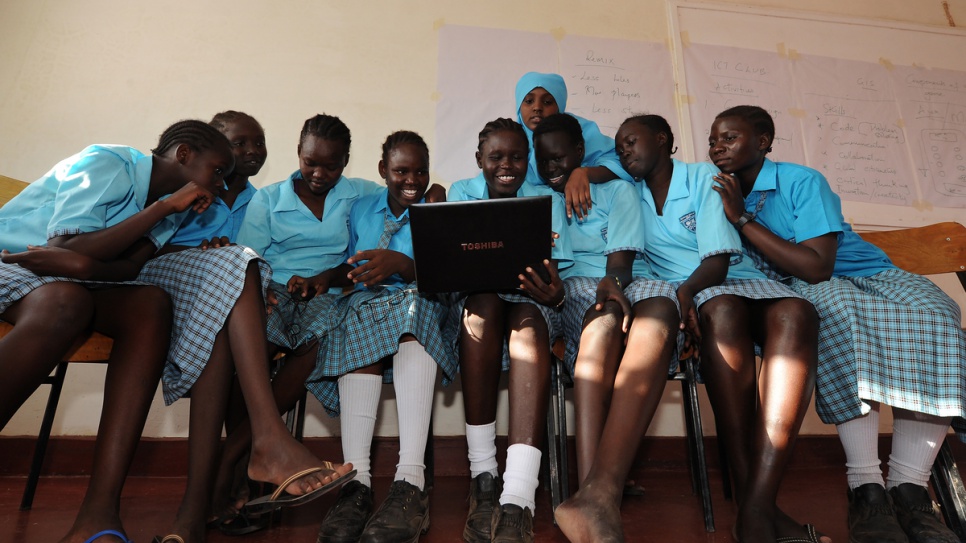13-year-old Lilliane lost her childhood when her stepfather took it upon himself to rob her of her dignity. A man who disguised himself as a guardian and protector to her and her family chose to hurt her by raping her almost every night.

The most alarming bit of it is that her mother came to learn of it but did nothing to stop him, in fact she only advised her daughter to start using family planning so that her man is well catered for without fear of pregnancy.
“At first I was scared to tell my mother about it but later chose to seek comfort in her and let her in on the evil acts of her husband but I was shocked and hurt that mother actually sided with him instead of protecting me,” she narrates.
When the young soul felt like she couldn’t take it anymore, she chose to run away and live on the streets where she was later integrated into Centre Marembo, an organisation that caters for sexually abused girls.
Lilliane is just a single case out of the many where young girls are faced with lots of struggles; this is not only present in Rwanda but the rest of the world especially in developing countries.
Such immoral and abusive acts affect the young girls’ health, education and the future as well at such a vital stage in their lives.
Impeding a girl’s safe, healthy path through adolescence to a productive and autonomous adulthood is a violation of her rights. This also not only takes a toll on her but the community and nation at large.
It is evident that healthy and educated girls will in the course of their lives contribute to greater economic growth, lower rates of infant and maternal death, smaller and better educated families and lower prevalence of HIV.
It is in this regard that countries signatory to the International Conference on Population and Development (ICPD) Plan of Action launch the State of the World Population (SWOP) Report every year.
This year’s launch will be held under the theme; 10: How our future depends on a girl at this decisive age on the 20th of this month.
Status of 10-year-olds worldwide
Nine out ten 10-year-olds (89%) live in less developed regions of the world. While 10-year-old boys outnumber 10-year-old girls in most countries, this difference is generally small and mainly due to natural differences in the sex ratio at birth, with the majority of countries having roughly 105 boys (or fewer) for every 100 girls.
The exception is Asia and the Pacific, where, at the regional level, there are 111 boys for every 100 girls. This is largely driven by significant differences in the numbers of boys and girls in a handful of countries, including India and China where there are 112 and 117 boys, respectively, for every 100 girls.
In both of these countries, the uneven sex ratio is largely driven by a strong preference for male children which results in discrimination against girl children both before they are born (in the form of prenatal sex selection) and afterwards (in the form of discriminatory practices that increase the mortality of girls).
Of the world’s approximately 60 million 10-year-old girls today, about 35 million live in countries with high levels of gender inequality measured by the Gender Inequality Index.
Status in Rwanda
Over the last 20 years, Rwanda has made great progress towards gender equality which has greatly benefited adolescent girls.
Education; the country has achieved universal primary education for both girls and boys. Overall, the primary school completion rate was 60.4% in 2015 with more girls in number.
Girls have now surpassed boys in secondary enrolment. In 2015, the net enrolment for girls was 30%, compared to 26.4% for boys. The integration of Comprehensive Sexuality Education in the new curriculum is also a great achievement towards safeguarding the health and wellbeing of future Rwandan generations.
However, despite the achievements so far, challenges still prevail. Girls’ performance in school is still slightly poorer than boys; 84.1% of enrolled girls passed their primary school exams in 2015 compared to 85.6% of boys, and 85.1% of girls enrolled passed their lower secondary school exams compared to 89.7% of boys.

